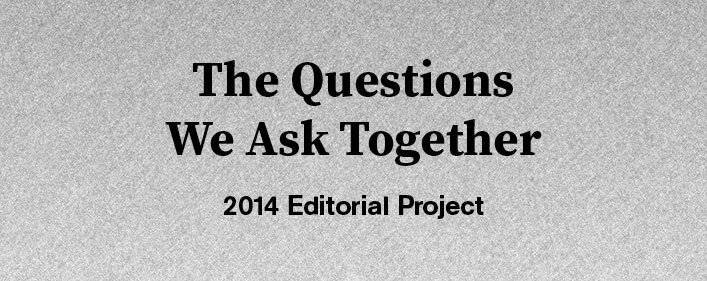Has medium inspecificity killed gallery art?
“The arts, then, have been hunted back to their mediums, and there they have been isolated, concentrated and defined. It is by virtue of its medium that each art is unique and strictly itself. To restore the identity of an art the opacity of its medium must be emphasized.” – Clement Greenberg, Towards a Newer Laocoon, 1940
“All media are mixed media…Materials and technologies go into a medium, but so do skills, habits, social spaces, institutions, and markets. The notion of “medium-specificity,” then, is never derived from a singular, elemental essence. It is more like the specificity associated with recipes in cooking: many ingredients, combined in a specific order in specific proportions, mixed in particular ways, and cooked at specific temperatures for a specific amount of time.” – W.J.T. Mitchell, There Are No Visual Media, 2008
Let me take a moment to acknowledge my affinity for W.J.T. Mitchell. In my opinion, “medium specificity” as defined by Clement Greenberg never really existed. As such, there is no way for me to discuss the how’s and why’s of “medium (in)specificity killing gallery art.” Frankly, I am not even sure what to make of the term “gallery art” which qualifies the question, but that’s a topic for another day.
My first reaction is to ask what on earth does it mean to talk about anything “medium-specific” in 2014, but in particular on the eve of an annual conference dedicated to socially engaged art practices? Are artists (regardless of their mediums), art historians, educators, curators, critics and culture watchers really still debating this and related terms like “formalism”? Hasn’t the wake of late 20th-century Postmodernism hunted Modernist “medium specific” theorists like Clement Greenberg back to the 18th- century? This is not to say that Clement Greenberg isn’t without his theoretical charms of persuasion. I rather like the old goat for having an opinion and sticking to it, but his mid-twentieth century arguments for the primacy of abstract painting and the holiness of “medium specificity” have always been a story of mythic proportions to me, and a story that’s as much about how theories and critical frameworks/discourses of art are constructed within particular historical moments, as they are the specific theories themselves. In Greenberg’s case, when we read now classic texts like Avant-Garde and Kitsch (1939), Towards a Newer Laocoon (1940), or Modernist Painting (1960-65), we are also revisiting the complexities of a post WWII art world newly rooted in the United States (specifically New York City), and brimming with communities of artists in exile, or those passing through from all corners of the globe. We know as close observers of this history that the framework/discourse of “medium specificity” found a vocal champion in the body of Clement Greenberg, but we also know that while his voice was loud and listened to by a powerful ecosystem of gallery owners, artists, institutions of higher education (i.e. art schools and art history departments), and even mainstream media, his theories reflected a tiny slice of what was actually happening on the ground. Yes, he dismissed or simply ignored artists who didn’t fit within his disciplined framework of media purity. In other words, he was silent on the likes of Robert Rauschenberg, Andy Warhol, and Allan Kaprow. So be it. His loss. Water under the bridge.
In the highly readable essay There Are No Visual Media (2008), W.J.T. Mitchell argues that all media are mixed media…”the very notion of a medium and of mediation already entails some mixture of sensory, perceptual, and semiotic elements.” He reminds us that it was the cultural theorist Raymond Williams who further defined medium in the mid-1970s as a “material social practice,” not a specifiable essence dictated by some elemental materiality (paint, stone, metal) or by technique or technology. In our historic moment, I appreciate it when Mitchell goes on to smartly suggest that it may be more useful to think of “medium specificity” within more open structures, structures not dissimilar to recipes for cooking where we acknowledge the range of possibilities among specific ingredients, proportions, and time.
So, where do ruminations and reminders on “medium (in)specificity” leave us as we consider the universe of socially engaged practices today? How might we continue to define, refine, and enact mediums of the social? I, for one, welcome recipes that call for a little of this and a little of that, but do so with purpose and a deep understanding of ingredients and where they come from. As a relative newbie to thinking and communicating about these expanded fields (and as an art museum staffer), I am in a constant state of curiosity, wonder and learning. I continue to have more questions than answers but I like being in this kitchen and mixing it up alongside some very talented chefs.
About the contributor: Stephanie Parrish is the Associate Director of Education & Public Programs at the Portland Art Museum where she currently oversees the Museum’s annual Shine a Light collaboration with students in the MFA in Art & Social Practice at Portland State University. She has presented on museums and socially engaged practices at numerous conferences including the National Art Education Association (NAEA), American Alliance of Museums (AAM), and Open Engagement. She earned a BA from New York University and an MA from Washington University in St. Louis both in Art History.
